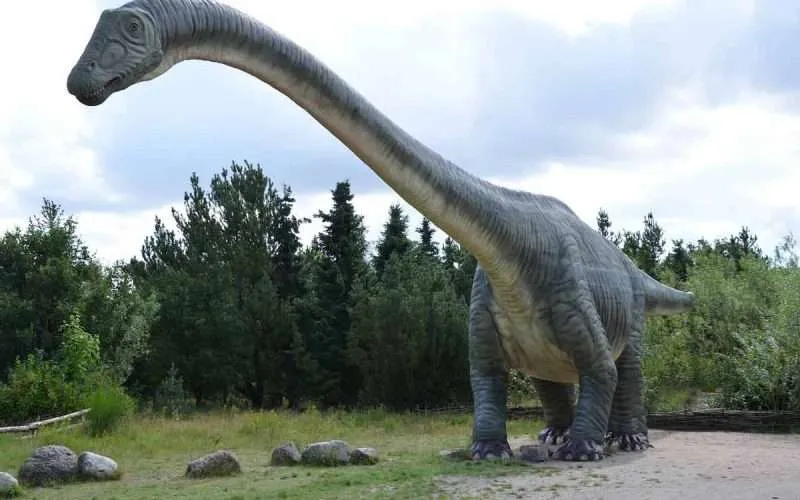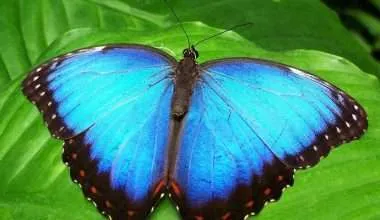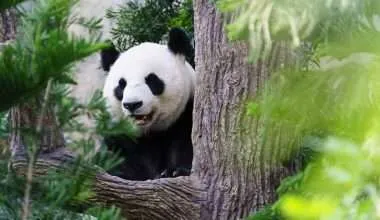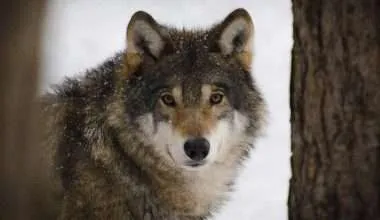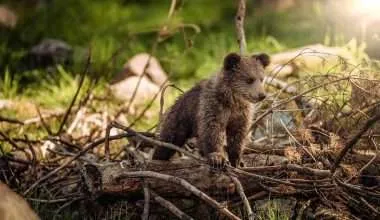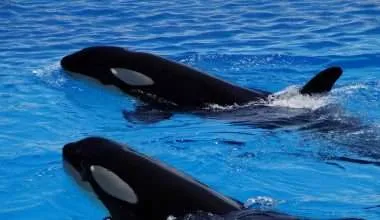Table of Contents Show
Every time someone mentions dinosaurs, the image of a bloodthirsty Tyrannosaurus Rex is sure to pop into our minds.
That is the power of the mass media, think about Jurassic Park here, and how they have positioned the T-Rex in our minds… we hear the word dinosaurs and we immediately think of these fearful beasts.
And yet, there is a lot more to dinosaurs than mere size, danger, and imagination that is colored with images of a Jurassic world.
10 Different Types of Dinosaurs You should Know
Although most records of exact Estimates vary, there are still around 300 legitimate genera and 700 valid species of ancient non-avian dinosaurs which have already been identified and described.
However, due to the fossil record being incomplete, we cannot determine the exact nature of the true diversity of these creatures. The problem with getting a more accurate estimate is the lack of information that we possess.
Scientists and archeologists have yet to unearth remains of additional types of dinosaurs that no doubt existed. Hence, the figures for the dinosaur variety that we have currently built are inefficient in accurately representing the real diversity of prehistoric dinosaurs.
While it is popularly believed that dinosaurs are large beasts with rock-hard skin, sharp teeth, and immense strength, it is entirely possible that they may have had features or even soft skin like us.
Since it is only the bones of the dinosaur that remain, we have a very limited amount of information to actually make accurate estimates of the very nature of these large animals.
However, even with this limited information, we have been able to effectively isolate and determine a large number of different types of dinosaurs.
Following is a list of some of the most popular magnificent creatures that lived millions of years ago.
1. Pterodactyl
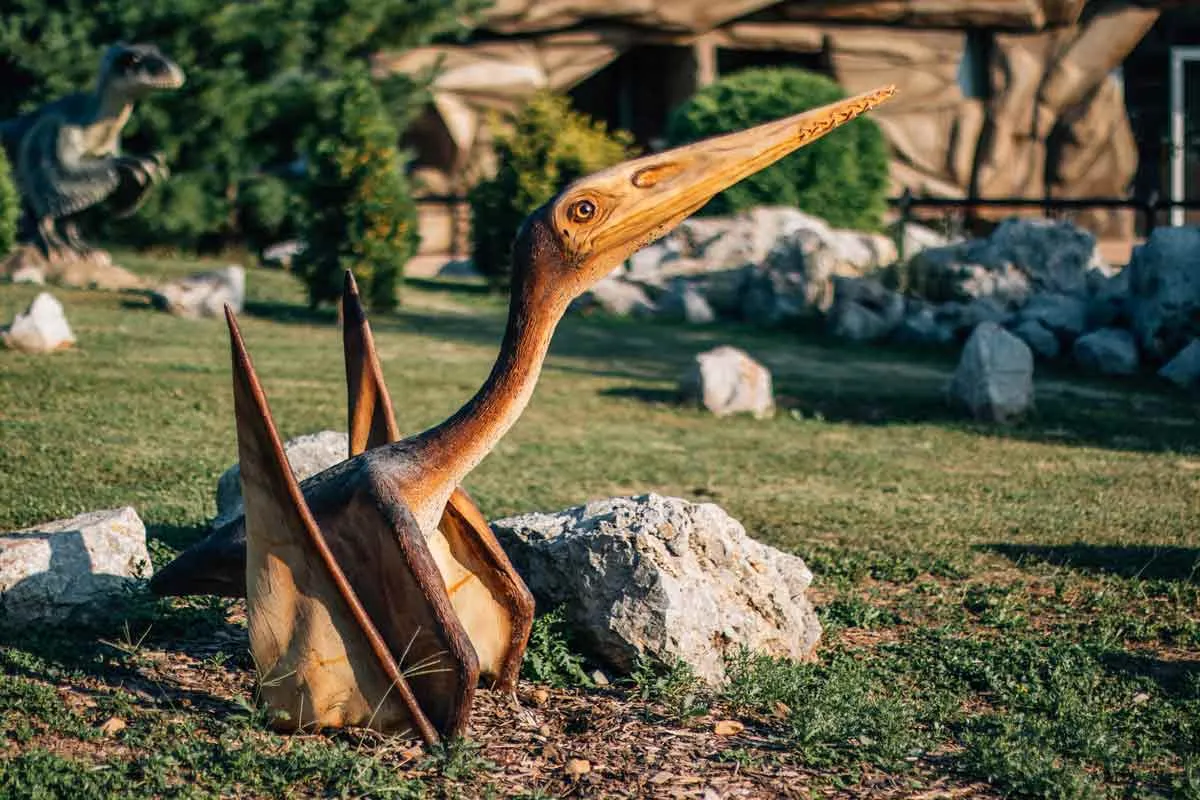
Once again reminiscent of the Jurassic period, the Pterodactyl, or flying dinosaur, is one of the most well-known types of dinosaurs in history.
A bird dinosaur creature that existed mostly in the African and European regions, the Pterodactyl has captured our imagination as being a magnificent flier. All of that is rather far from the truth.
There is plenty of modern-day day research that suggests that the Pterodactyl had a unique body structure. It was due to its unique body structure that the Pterodactyl was unable to fly at all.
This alone is an indication that our fantasies regarding the cretaceous period are quite likely not as accurate as we would like them to be. This also highlights the mystery that surrounds dinosaurs as well as our ignorance about the same.
2. Lirainosaurus
Lirainosaurus were herbivorous dinosaurs with long necks. It’s easy to imagine a Lirainosaurus eating the very fresh, succulent leaves from the tops of trees in huge green fields.
These massive dinos are known to have lived in Europe, with the greatest possibility of their prehistoric habitat being the region that makes up modern day Spain.
Native to this part of the world in the late Jurassic period, it is almost certain that these huge creatures ruled these ancient lands long before they became a fossil in their very homes.
3. Allosaurus
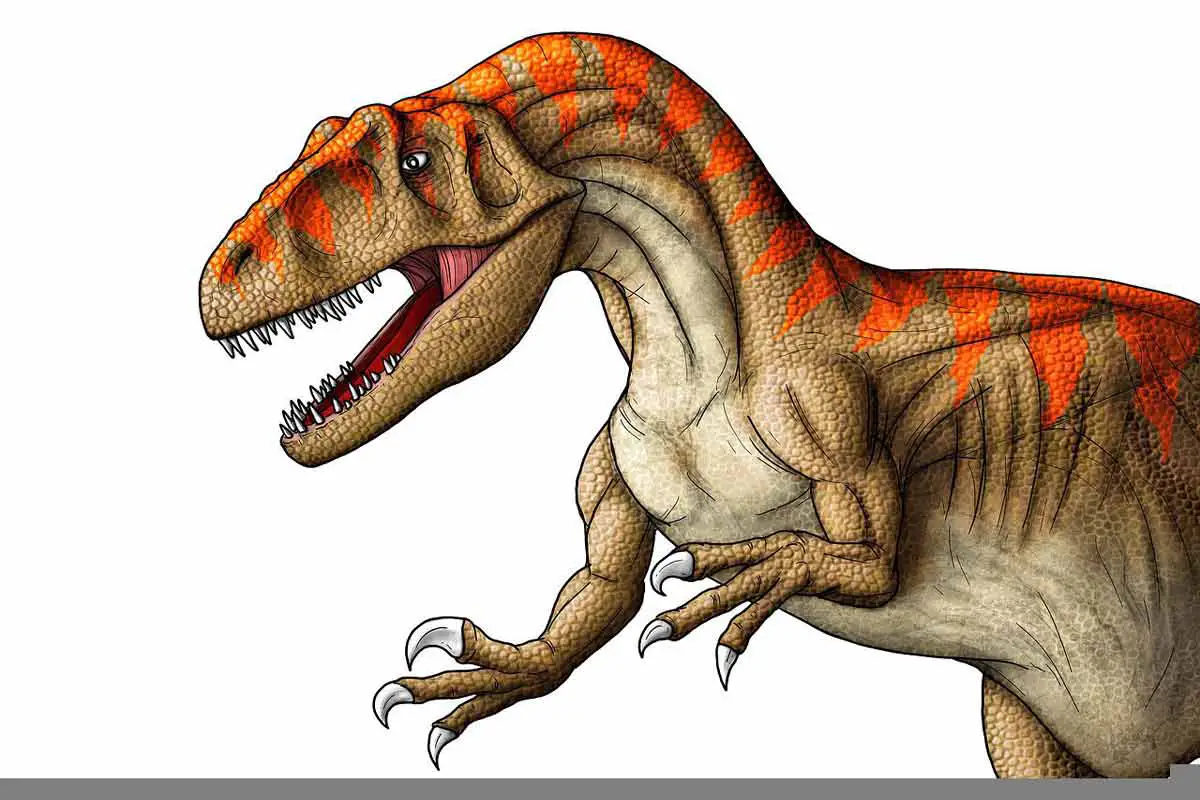
Of course, when you think about the Jurassic Period, the fiercest dinosaur that comes to mind is the T-Rex. And yet, was the T-Rex really all that dangerous even among the Theropod family. Well, not quite. That is because the Allosaurus was even more dangerous than the T-Rex. Existing in the late cretaceous period, the Allosaurus was one dino every living creature needed to really watch out for. That was because not only was this dino a ferocious meat eater boasting massive jaws with razor sharp teeth, it also possessed hand claws that were almost a foot long. That meant that in the late Jurassic era, this particular dinosaur was certainly one that you needed to watch out for.
4. Veloricaptors
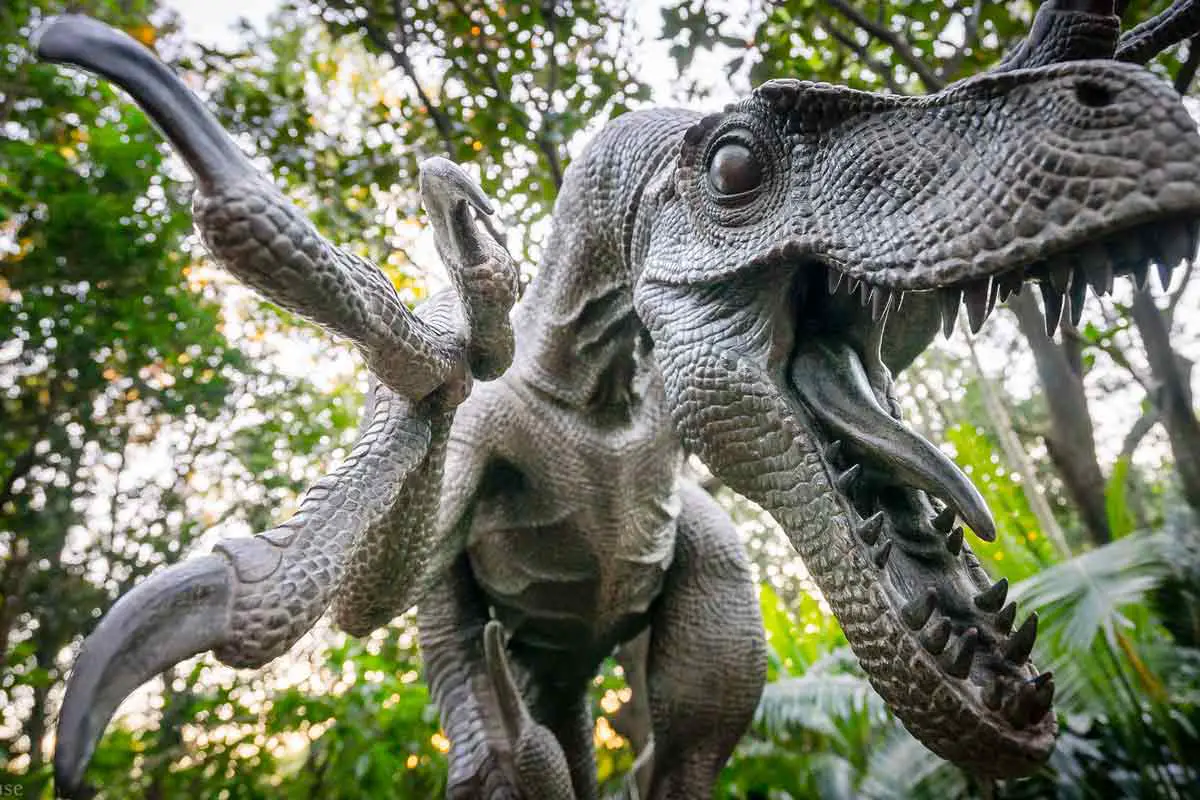
These carnivorous species of dinosaurs, belonging to the group known as theropods, have been credited as the smartest dinos that lived in the Jurassic World movie franchise. Although with current modern research there seems to be some form of weight to that claim that it is not unlikely that a new species may soon be discovered that could have potentially outwitted this carnivore.
Nevertheless, the Veloricaptor is one of the most popular dino species among humans even though it is not as large as many other dinosaurs. This small creature was able to communicate and hunt in herds. Quite a bit of rarity amongst dinosaurs.
The Veloricaptors lived in the Gobi desert of Mongolia. These small agile dinosaurs were capable of sprinting for long distances with impressive speeds. It is this trait that has earned them the title of ‘Desert Darter’.
Yet another title that these adored Jurassic creatures have recently attained is ‘feathered lizard’, or ‘featured friends’ on account of new research that has made it evident that these dinos were a feathered species.
Although Veloricaptors did have feathers, they did not likely use those feathers to actually fly, rather these dinos probably used them to keep warm and attract potential mates. A trait observed in modern day amongst certain species of birds with colorful feathers.
These small carnivorous dinosaurs, while only growing to about the size of a large turkey, were dangerous predators and often trapped their herbivorous prey by working as a group. It is likely that they took down other Jurassic creatures much larger than themselves.
5. Brontosaurus
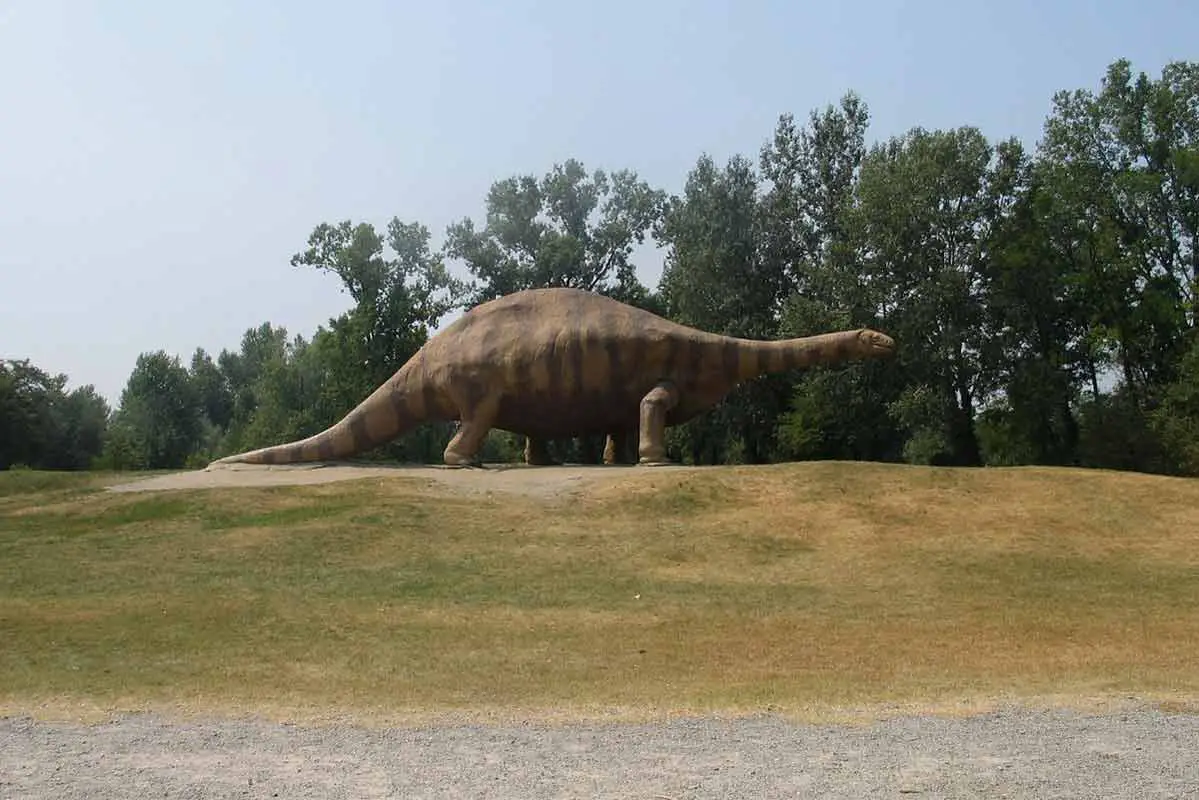
The name “Brontosaurus” is derived from Greek and means “thunder lizard.” These dinosaurs are well-known in Hollywood. In fact, these long neck dinosaur species were not only depicted in films and other forms of fiction, but they even made their way onto postal stamps!
The Brontosaurus was a herbivore, with a long, narrow neck and a massive, hefty body. Brontosaurus species lived in what is now known as North America. These behemoths were around 22 meters long and weighed up to 17 tonnes.
To get a better bearing of the scale of this size, it is easier to imagine the current largest land species in the world, the elephant. can weigh up to 7 tonnes. In contrast; the long neck dinosaur species, the Brontosaurus; is about 3 to 5 times as massive as these elephants.
6. Tyrannosaurus Rex
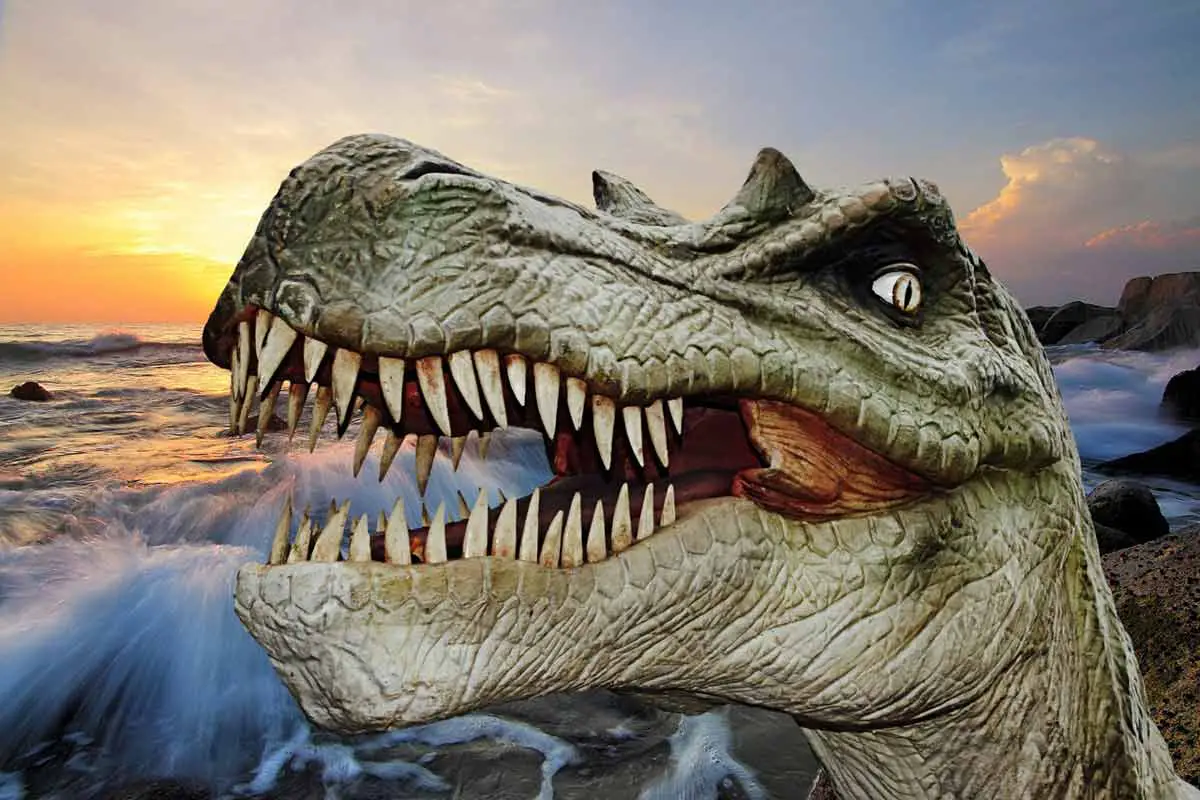
Tyrannosaurus, more popularly known as the T-Rex, is without a doubt the most well-known dinosaur.
It may surprise you to learn that the title “Tyrannosaurs” literally means “tyrant lizard king.”
Having been the subject of various media productions makes the T-Rex possibly the most popular dinosaur of them all.
So, as is common knowledge, the T-Rex was carnivorous, had ridiculously small arms and teeth that were formidable and scary enough to be its most trusted weapon.
By nature, the T-Rex is generally believed to have been very vicious, as is shown by its tendency to play with its victim before devouring it.
Latest research indicates that the T-Rex was covered in feathers.
7. Stegosaurus
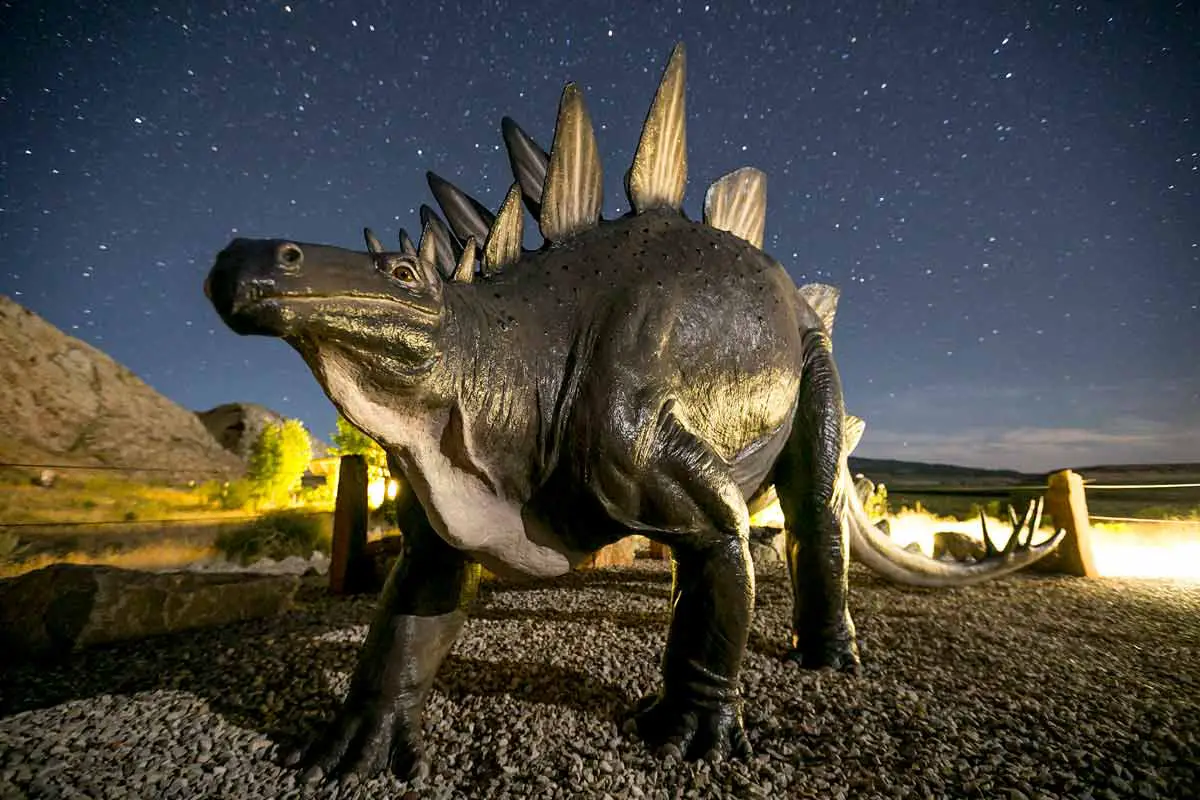
The Stegosaurus is one of the most unique dinosaurs on the planet. It is easily identified by the two rows of armored plates that run along its massive back and the length of its spine and tail.
It had a small, muscular body and clung to the ground with its tail. Because its back legs are longer than its front legs, it often feels as if the Stegosaurus was in a perpetually squatting position..
The Stegosaurus was a herbivore that grazed on the ground. While researchers think Stegosaurus lived in Europe and North America, its bones have been unearthed as far east as China!
8. Triceratops
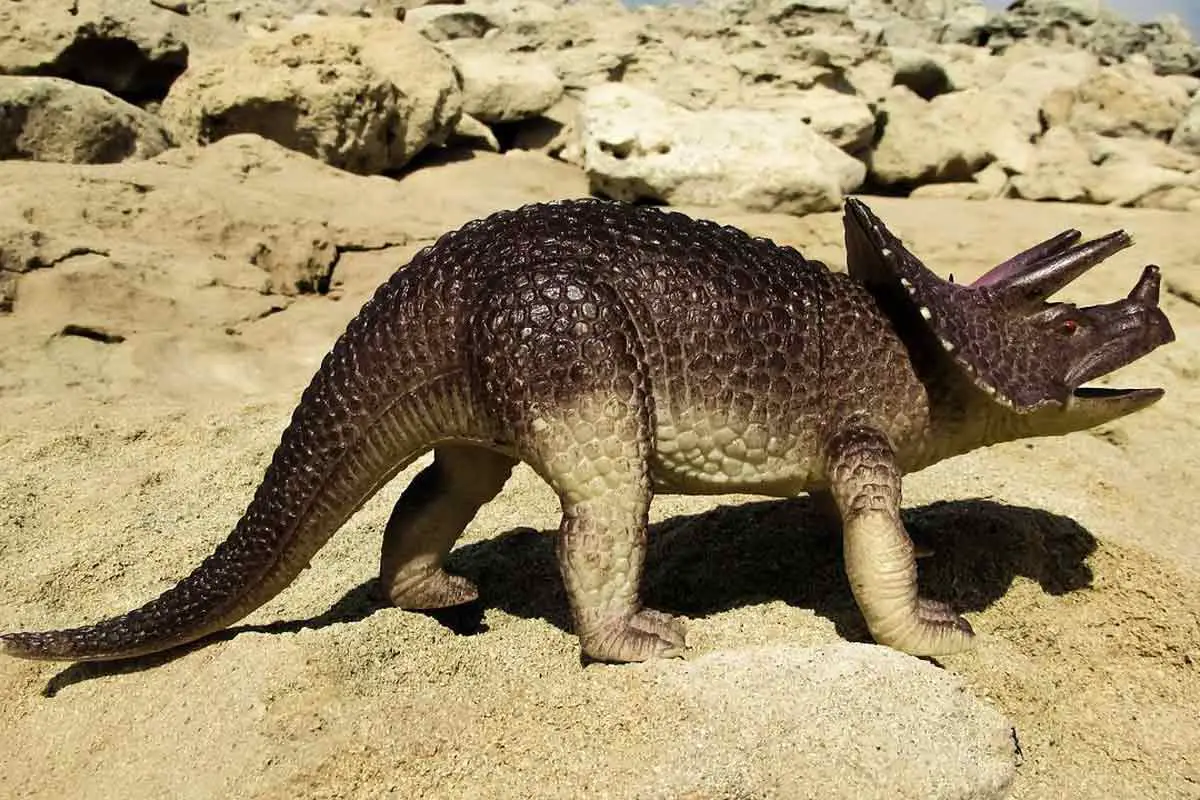
Tri in itself means three, an indication that this is the three-horned, herbivorous Triceratop that is under discussion here.
The horns along with the bony band structure around its neck are two of the most distinguishing features of this prehistoric reptile. If you’ve seen the movie Jurassic Park, you may already be familiar with Triceratops.
Their character is mostly unknown, although most movies about the late cretaceous era depict the Triceratops as being unpredictable and violent, little is confirmed about the exact nature of these dino species.
Here is a bit of trivia regarding these huge beasts.They were only as big as an African elephant in today’s world!
9. Ankylosaurus
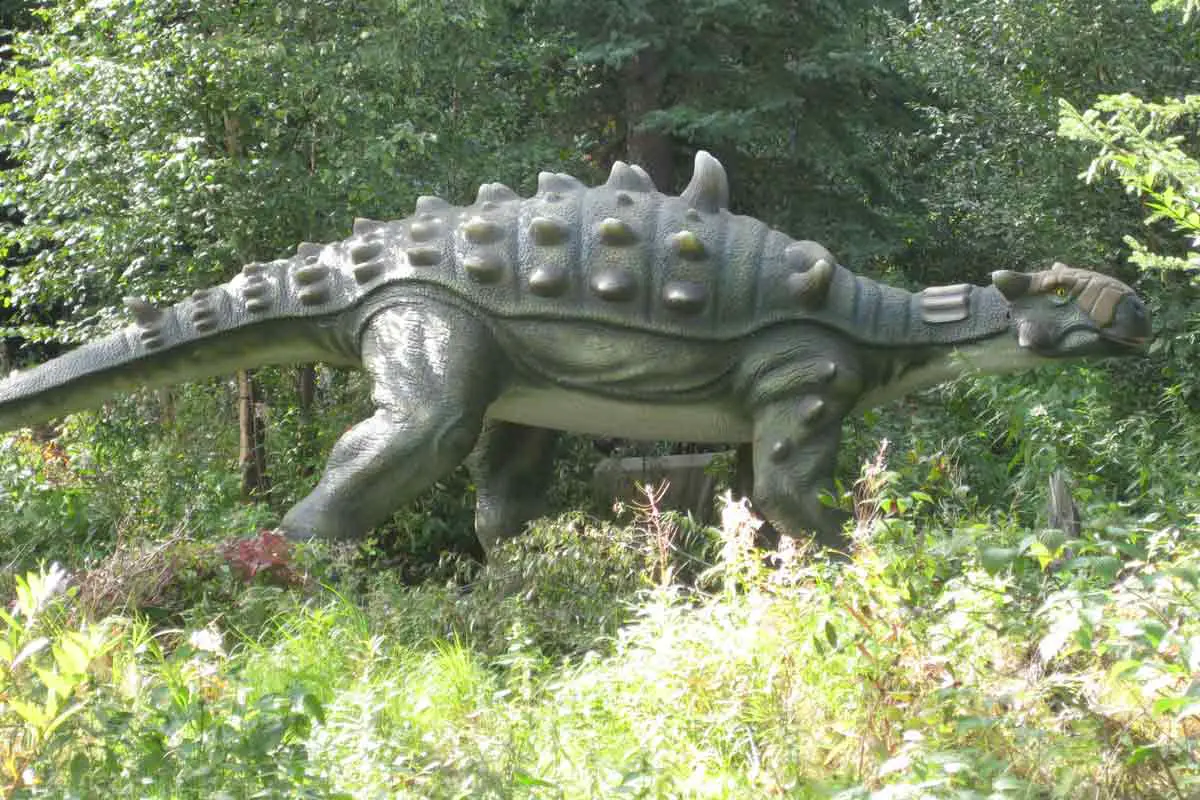
More than 66 million years ago, Ankylosaurus alone roamed the grounds. These massive armored dinosaurs were one of the last dinosaurs to exist.
It is largely believed that their massive armor as well as their extreme is what allowed them to survive while the rest of their species fell to become dinosaur fossils over the next billion years.
Experts think that these dinosaurs were present throughout the dinosaur catastrophe era and the large-scale catastrophic extinction of dinosaurs. The word “Ankylosaurus” literally means “fused lizard.” While they did not resemble current lizards, the name is appropriate.
An adult Ankylosaurus could reach 30 feet in height and weighed roughly 6,000 kg. These dinosaurs had relatively tiny teeth in comparison to their size.
However, because they were herbivores, it was not a major issue for them. The Ankylosaurus’s body was coated in scales, but its tail was the most spectacular feature. It possessed a gigantic tail club that it spun around during combat to unleash tremendous amounts of force.
Experts widely agree on the belief that a single swing of this massive armored dinosaur’s tail could knock any competitor off for good.
10. Europasaurus
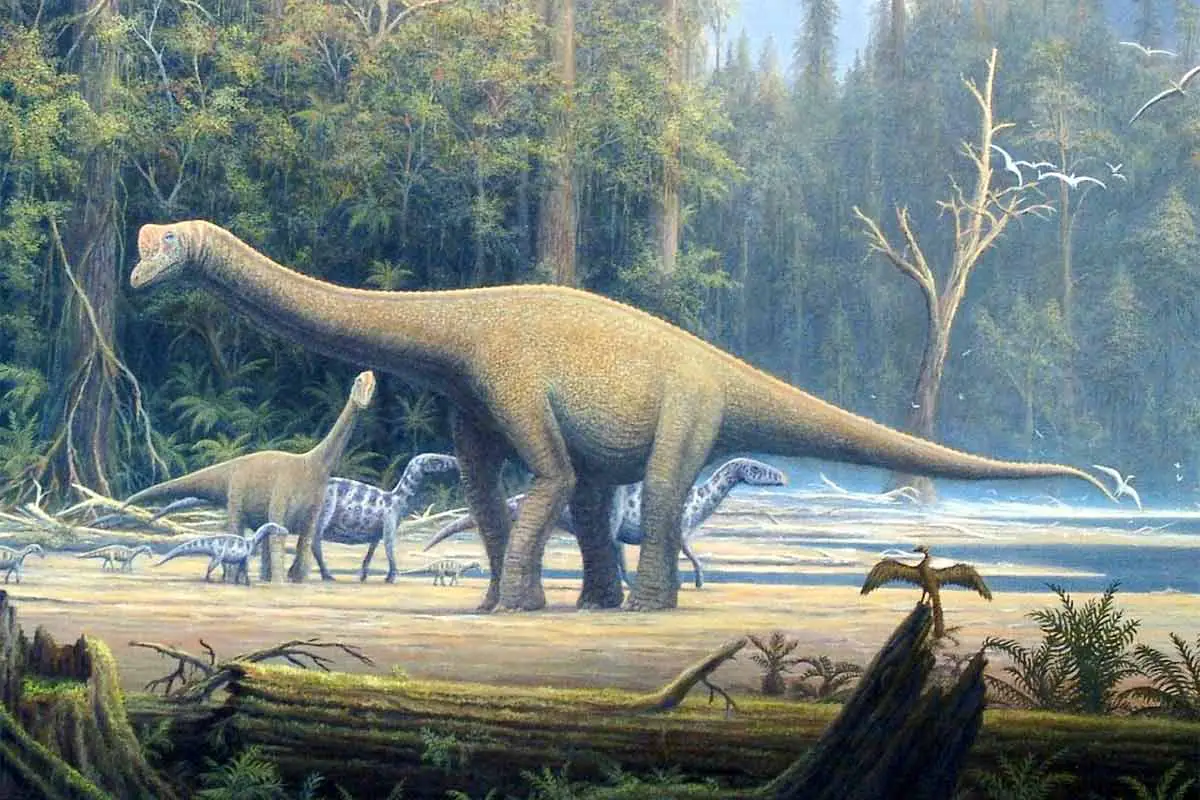
Europasaurus, a member of the Sauropod family, is likely the smallest member of the family to date. It’s worth noting that Europasaurus is only known from a single dig in Germany.
However, there were more than ten animals at the excavation site. Using the dinosaur fossils from these 10 animals, while a full skeleton has yet to be discovered, scientists have recovered a number of bones that have helped them understand the anatomy of the Europasaurus.
Europasaurus is significantly smaller than the other dinosaur species in the Sauropod family. In fact, some say that because these dinosaurs were just 6 feet tall and weighed the same as a modern cow, they were an example of “Island Dwarfing.”
Remember that island dwarfing is a phenomenon in which the average size of some species reduces as a result of scarcity of resources and increased competition among similar creatures.
In this case, it was likely competition between the Sauropod Group of dinosaurs.
A brief history of dinosaurs
Although dinosaurs have been extinct for millions of years, these magnificent beasts that existed eons ago are more well-known today than one could expect. And that too when this is a world that existed long before humans, a Jurassic world that has, even today, passed into legend.
What is even more surprising is how engaged this fascinating species has kept us, to the point that we still talk and think about them with fear, awe, and interest.
What is more interesting is how this fantastic creature has still managed to earn a lot of fans in human society. These prehistoric giants are even more known today than ever before when they are a long-extinct and completely foreign species.
Dinosaurs may be seen in anything from blockbuster movies to literary fiction and even cartoons!
It is reasonable to believe that the human species did not come into contact with dinosaurs, yet we still adore and appreciate them. Learning about them is not only entertaining, but it may also be incredibly intriguing!
These majestic beasts existed about 67 million years ago. It is almost impossible to think how such an ancient species of creatures that ruled the world once is adored and loved by humans today.
What most people find interesting about the great age of dinosaurs is how they became extinct.
What caused Dinosaurs to go Extinct?
Though the hypothetical accounts of the mass extinction event that killed off all the dinosaurs vary greatly. Still, the most widely accepted theory, backed up by scientists and experts, claims that dinosaurs were killed off by a giant meteor that hit the Earth during their reign.
While another theory that has quite a bit of following is that volcanic eruptions are what eventually led to the extinction of the mightiest species to roam the Earth.
It is believed that the massive volcanic bouts produced enough dirt, debris, and smog that they choked the skies. This in turn blocked all sunlight from reaching Earth and eventually, life on Earth died out without the sun.
Without the sun’s light, plants on the planet were unable to carry out photosynthesis which eventually led to the food webs being utterly disrupted. If you’ve studied Biology then you can probably guess that at this point the dinosaurs starved to death.
Yet another extinction theory has its roots in climate change and the effects of greenhouse gasses on the environment. This theory suggests that it was the massive amounts of greenhouse gasses that chaotically altered the atmosphere, making it almost impossible for any large species to survive. Thus, the dinosaurs were one of the first to perish in this harsh environment.
While all these theories are little more than speculative zoology taking form, they all lead to the same disastrous eventual conclusion.
The end of the mightiest species to ever walk the planet.
It probably isn’t wrong to say, regardless of the cause of their extinction, that natural selection simply did not favor these magnificent beasts.
